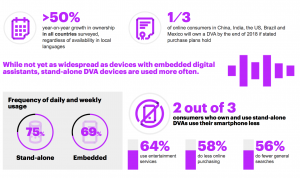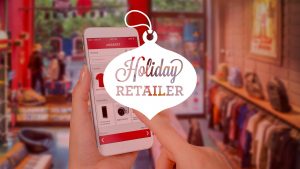— November 28, 2017

Pixabay
If you’re a business with multiple physical store locations, it can be hard to know where to start your SEO efforts. You want to make sure people know where you are and how to find you, but you don’t know how to keep everything the same, yet different. Here are a few tips to help you get started.
Keep User Experience, Layout and Design Consistent
Each of your store landing pages should maintain the look and feel of the rest of your site. The user experience, layout, and design should be the same. Keep the navigation in the header and footer of the site the same, to make it easy for users to navigate to other parts of the site.
Use a Logical Page Hierarchy
This is best for SEO and user experience. Ideally, your page hierarchy should look something like this: Store Finder > State > City > Store Location Page
Make them Mobile-Friendly
Since the majority of internet traffic comes from mobile devices, your pages should be at least mobile-friendly. Google now considers mobile-friendly as a ranking factor, so if your pages aren’t, you could be affecting your ranking. Better yet, go one step further and make sure your pages are mobile-optimized.
Weave Keywords in Artfully
Always write for the user first. Don’t stuff keywords in the content. This will backfire in terms of ranking and user experience. Rely on long tail keywords as those will be the easiest to work in. Other words and phrases will naturally work their way in based on the topic you’re writing about. For instance, if you are a computer repair store, words like, “computer virus”, “diagnosing computer problems”, “laptop repair” and “how to fix your laptop” are other related keywords that would naturally fit into the content.
Write Unique Content for Each Location
As tempting as it may be to rely on generic boilerplate copy for each store location, it’s better for users and search engines if you write unique content for each location. Highlight information about the local area, the number of stores you have within the city, and so on, to keep the content varied from one landing page to the next.
The longer the content, the better. If it’s too short, the search engines won’t consider it useful, and you won’t really be able to provide all the information your customers are looking for. Aim for at least 800 words on each of your landing pages.
Include Useful Information
Each store location page should include a map embed, a list of nearby store locations, store hours, address, and contact information. It’s also a good idea to include “get directions” and “text to mobile” and “click to call” features so that if your users are coming from mobile devices, they can easily get directions to your location or call you. And if they’re coming to you from a desktop, they can easily have that information sent to their phone.
Add Helpful Features
If your stores host events, make sure to include a calendar or list of upcoming events. (If you do, use the Event schema.) Add information about any coupons and sales. If you require a coupon to use in-store, add it so people have the option to print it and bring it with them. If you have an app, include a link to each app marketplace so people can easily download the app to access special coupons to use in store.
Add the names and photos of managers and other key employees. This way, people know who to look for and who to contact if they have issues or questions.
Add photos of the inside and outside of the store. Also, consider adding video of the store location.
Include testimonials or review from others about the store. Each location will strive to offer the same experience, but that’s not always the case.
Use Schema Markup
Without Schema, also known as structured data, the search engine bots can’t tell what your content is. It reads the information, but doesn’t understand it. Schema markup is a way to help the search engines understand the content to improve the ranking.
Common markups to use for local SEO landing pages include:
- LocalBusiness: Here is where you can specify the type of business, your hours of operation, currencies and payment types accepting, and price range.
- Organization: You can include address, people who work there, brands, contact points, wards, the geographic area served, aggregate ratings,
- Store: Uses properties from LocalBusiness, Organization, Place, Thing, to provide even more detail about your location.
- DepartmentStore: Uses properties from LocalBusiness and Organization and other schemas to help you provide as much detail as possible.
- Event: Share upcoming or past events associated with the place. You can include a variety of details about the event with properties such as: thing, aggregate rating, date/time, audience, and so on.
Include Social Media Buttons
Add social media profile buttons for each store location. If each store location doesn’t have their own social media profiles, link to the main accounts. You should also include a separate set of social media share buttons so people can easily share your content on their social media profiles.
Include Landing Pages in Your Sitemap
Make sure all your landing pages are included in your XML sitemap. Check to be sure the sitemap has been submitted properly and updated accordingly in Google Search Console.
Digital & Social Articles on Business 2 Community
(41)






